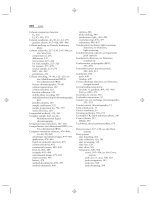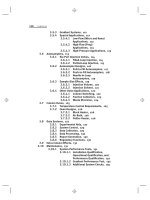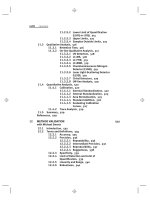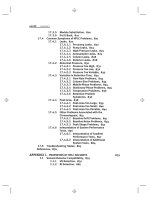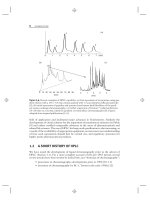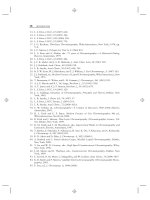Introduction to modern power electronic
Bạn đang xem bản rút gọn của tài liệu. Xem và tải ngay bản đầy đủ của tài liệu tại đây (22.14 MB, 471 trang )
Introduction to
Modern Power
Electronics
Andrzej M. Trzynadlowski
THIRD EDITION
INTRODUCTION TO
MODERN POWER
ELECTRONICS
INTRODUCTION TO
MODERN POWER
ELECTRONICS
THIRD EDITION
Andrzej M. Trzynadlowski
Copyright © 2016 by John Wiley & Sons, Inc. All rights reserved
Published by John Wiley & Sons, Inc., Hoboken, New Jersey
Published simultaneously in Canada
No part of this publication may be reproduced, stored in a retrieval system, or transmitted in any form
or by any means, electronic, mechanical, photocopying, recording, scanning, or otherwise, except as
permitted under Section 107 or 108 of the 1976 United States Copyright Act, without either the prior
written permission of the Publisher, or authorization through payment of the appropriate per-copy fee
to the Copyright Clearance Center, Inc., 222 Rosewood Drive, Danvers, MA 01923, (978) 750-8400,
fax (978) 750-4470, or on the web at www.copyright.com. Requests to the Publisher for permission
should be addressed to the Permissions Department, John Wiley & Sons, Inc., 111 River Street,
Hoboken, NJ 07030, (201) 748-6011, fax (201) 748-6008, or online at
/>Limit of Liability/Disclaimer of Warranty: While the publisher and author have used their best efforts
in preparing this book, they make no representations or warranties with respect to the accuracy or
completeness of the contents of this book and specifically disclaim any implied warranties of
merchantability or fitness for a particular purpose. No warranty may be created or extended by sales
representatives or written sales materials. The advice and strategies contained herein may not be
suitable for your situation. You should consult with a professional where appropriate. Neither the
publisher nor author shall be liable for any loss of profit or any other commercial damages, including
but not limited to special, incidental, consequential, or other damages.
For general information on our other products and services or for technical support, please contact our
Customer Care Department within the United States at (800) 762-2974, outside the United States at
(317) 572-3993 or fax (317) 572-4002.
Wiley also publishes its books in a variety of electronic formats. Some content that appears in print
may not be available in electronic formats. For more information about Wiley products, visit our web
site at www.wiley.com.
Library of Congress Cataloging-in-Publication Data:
Trzynadlowski, Andrzej.
Introduction to modern power electronics / Andrzej M. Trzynadlowski. – Third edition.
pages cm
Includes bibliographical references and index.
ISBN 978-1-119-00321-2 (cloth)
1. Power electronics. I. Title.
TK7881.15.T79 2016
621.31′ 7–dc23
2015024257
Printed in the United States of America
10 9 8 7 6 5 4 3 2 1
For Dorota, Bart, Nicole, Genie, Gary, and Guy
CONTENTS
Preface
xiii
About the Companion Website
xv
1 Principles of Electric Power Conversion
1
1.1
1.2
1.3
1.4
1.5
1.6
What Is Power Electronics? 1
Generic Power Converter 3
Waveform Components and Figures of Merit 8
Phase Control and Square-Wave Mode 16
Pulse Width Modulation 22
Computation of Current Waveforms 30
1.6.1 Analytical Solution 30
1.6.2 Numerical Solution 35
1.6.3 Practical Example: Single-Phase Diode Rectifiers
Summary 43
Examples 43
Problems 50
Computer Assignments 53
Further Reading 56
2 Semiconductor Power Switches
2.1 General Properties of Semiconductor Power Switches
2.2 Power Diodes 59
2.3 Semi-Controlled Switches 63
2.3.1 SCRs 64
2.3.2 Triacs 67
2.4 Fully Controlled Switches 68
2.4.1 GTOs 68
2.4.2 IGCTs 69
2.4.3 Power BJTs 70
2.4.4 Power MOSFETs 74
2.4.5 IGBTs 75
2.5 Comparison of Semiconductor Power Switches 77
2.6 Power Modules 79
2.7 Wide Bandgap Devices 84
38
57
57
vii
viii
CONTENTS
Summary 86
Further Reading
3
87
Supplementary Components and Systems
88
3.1 What Are Supplementary Components and Systems? 88
3.2 Drivers 89
3.2.1 Drivers for SCRs, Triacs, and BCTs 89
3.2.2 Drivers for GTOs and IGCTs 90
3.2.3 Drivers for BJTs 91
3.2.4 Drivers for Power MOSFETs and IGBTs 94
3.3 Overcurrent Protection Schemes 96
3.4 Snubbers 98
3.4.1 Snubbers for Power Diodes, SCRs, and Triacs 101
3.4.2 Snubbers for GTOs and IGCTs 102
3.4.3 Snubbers for Transistors 103
3.4.4 Energy Recovery from Snubbers 104
3.5 Filters 106
3.6 Cooling 109
3.7 Control 111
Summary 113
Further Reading 114
4
AC-to-DC Converters
4.1 Diode Rectifiers 115
4.1.1 Three-Pulse Diode Rectifier 115
4.1.2 Six-Pulse Diode Rectifier 117
4.2 Phase-Controlled Rectifiers 130
4.2.1 Phase-Controlled Six-Pulse Rectifier
4.2.2 Dual Converters 143
4.3 PWM Rectifiers 149
4.3.1 Impact of Input Filter 149
4.3.2 Principles of PWM 150
4.3.3 Current-Type PWM Rectifier 158
4.3.4 Voltage-Type PWM Rectifier 163
4.3.5 Vienna Rectifier 175
4.4 Device Selection for Rectifiers 178
4.5 Common Applications of Rectifiers 180
Summary 184
Examples 185
Problems 191
Computer Assignments 193
Further Reading 195
115
130
CONTENTS
5 AC-to-AC Converters
ix
196
5.1 AC Voltage Controllers 196
5.1.1 Phase-Controlled Single-Phase AC Voltage Controller 196
5.1.2 Phase-Controlled Three-Phase AC Voltage Controllers 203
5.1.3 PWM AC Voltage Controllers 211
5.2 Cycloconverters 215
5.3 Matrix Converters 220
5.3.1 Classic Matrix Converters 220
5.3.2 Sparse Matrix Converters 227
5.3.3 Z-Source Matrix Converters 230
5.4 Device Selection for AC-to-AC Converters 234
5.5 Common Applications of AC-to-AC Converters 235
Summary 236
Examples 237
Problems 241
Computer Assignments 242
Further Reading 243
6 DC-to-DC Converters
245
6.1 Static DC Switches 245
6.2 Step-Down Choppers 248
6.2.1 First-Quadrant Chopper 250
6.2.2 Second-Quadrant Chopper 254
6.2.3 First-and-Second-Quadrant Chopper 256
6.2.4 First-and-Fourth-Quadrant Chopper 258
6.2.5 Four-Quadrant Chopper 260
6.3 Step-Up Chopper 262
6.4 Current Control in Choppers 265
6.5 Device Selection for Choppers 265
6.6 Common Applications of Choppers 267
Summary 269
Examples 269
Problems 272
Computer Assignments 274
Further Reading 275
7 DC-to-AC Converters
7.1 Voltage-Source Inverters 276
7.1.1 Single-Phase VSI 277
7.1.2 Three-Phase VSI 286
7.1.3 Voltage Control Techniques for PWM Inverters
7.1.4 Current Control Techniques for VSIs 306
276
295
x
CONTENTS
7.2 Current-Source Inverters 315
7.2.1 Three-Phase Square-Wave CSI 315
7.2.2 Three-Phase PWM CSI 319
7.3 Multilevel Inverters 322
7.3.1 Diode-Clamped Three-Level Inverter 324
7.3.2 Flying-Capacitor Three-Level Inverter 327
7.3.3 Cascaded H-Bridge Inverter 329
7.4 Soft-Switching Inverters 333
7.5 Device Selection for Inverters 341
7.6 Common Applications of Inverters 344
Summary 352
Examples 352
Problems 359
Computer Assignments 360
Further Reading 362
8
Switching Power Supplies
364
8.1 Basic Types of Switching Power Supplies 364
8.2 Nonisolated Switched-Mode DC-to-DC Converters 365
8.2.1 Buck Converter 366
8.2.2 Boost Converter 369
8.2.3 Buck–Boost Converter 371
ˆ Converter 374
8.2.4 Cuk
8.2.5 SEPIC and Zeta Converters 378
8.2.6 Comparison of Nonisolated Switched-Mode DC-to-DC
Converters 379
8.3 Isolated Switched-Mode DC-to-DC Converters 382
8.3.1 Single-Switch-Isolated DC-to-DC Converters 383
8.3.2 Multiple-Switch-Isolated DC-to-DC Converters 386
8.3.3 Comparison of Isolated Switched-Mode DC-to-DC
Converters 389
8.4 Resonant DC-to-DC Converters 390
8.4.1 Quasi-Resonant Converters 391
8.4.2 Load-Resonant Converters 395
8.4.3 Comparison of Resonant DC-to-DC Converters 402
Summary 402
Examples 403
Problems 406
Computer Assignments 408
Further Reading 410
9
Power Electronics and Clean Energy
9.1 Why Is Power Electronics Indispensable in Clean Energy
Systems? 411
411
CONTENTS
xi
9.2 Solar and Wind Renewable Energy Systems 413
9.2.1 Solar Energy Systems 413
9.2.2 Wind Energy Systems 417
9.3 Fuel Cell Energy Systems 422
9.4 Electric Cars 424
9.5 Hybrid Cars 426
9.6 Power Electronics and Energy Conservation 430
Summary 431
Further Reading 432
Appendix A Spice Simulations
433
Appendix B Fourier Series
438
Appendix C Three-Phase Systems
442
Index
447
PREFACE
This text is primarily intended for a one-semester introductory course in power electronics at the undergraduate level. However, containing a comprehensive overview of
modern tools and techniques of electric power conditioning, the book can also be used
in more advanced classes. Practicing engineers wishing to refresh their knowledge of
power electronics, or interested in branching into that area, are also envisioned as
potential readers. Students are assumed to have working knowledge of the electric
circuit analysis and basic electronics.
During the five years since the second edition of the book was published, power
electronics has enjoyed robust progress. Novel converter topologies, applications, and
control techniques have been developed. Utilizing advanced semiconductor switches,
power converters reach ratings of several kilovolts and kiloamperes. The threat of
unchecked global warming, various geopolitical and environmental issues, and the
monetary and ecological costs of fossil fuels represent serious energy challenges,
which set off intensive interest in sources of clean power. As a result, power electronic
systems become increasingly important and ubiquitous. Changes made to this third
edition reflect the dominant trends of modern power electronics. They encompass the
growing practical significance of PWM rectifiers, the Z-source dc link, matrix converters, and multilevel inverters, and their application in renewable energy systems
and powertrains of electric and hybrid vehicles.
In contrast with most books, which begin with a general introduction devoid of
detailed information, Chapter 1 constitutes an important part of the teaching process.
Employing a hypothetical generic power converter, basic principles and methods of
power electronics are explained. Therefore, whatever content sequence an instructor
wants to adopt, Chapter 1 should be covered first.
Chapters 2 and 3 provide description of semiconductor power switches and supplementary components and systems of power electronic converters. The reader should
be aware of the existence and function of those auxiliary but important parts although
the book is mostly focused on power circuits, operating characteristics, control, and
applications of the converters.
The four fundamental types of electrical power conversion—ac to dc, ac to ac, dc
to dc, and dc to ac—are covered in Chapters 4 through 7, respectively. Chapters 4 and
7, on rectifiers and inverters, are the longest chapters, reflecting the great importance
of those converters in modern power electronics. Chapter 8 is devoted to switching
dc power supplies, and Chapter 9 covers applications of power electronics in clean
energy systems.
xiii
xiv
PREFACE
Each chapter begins with an abstract and includes a brief summary that follows
the main body. Numerical examples, homework problems, and computer assignments
complement most chapters. Several relevant and easily available references are provided after each of them. Three appendices conclude the book.
The textbook is accompanied by a series of forty-six PSpice circuit files constituting a virtual power electronics laboratory, and available at ey
.com/go/modernpowerelectronics3e. The files contain computer models of most
power electronic converters covered in the book. The models are a valuable teaching tool, giving the reader an opportunity to tinker with the converters and visualize their operation. Another teaching tool, a PowerPoint presentation, which
contains all figures, tables, and most important formulas, is also available, at
It will ease the instructor from
drawing the often complex circuit diagrams and waveforms on the classroom board.
Against most of the contemporary engineering textbooks, the book is quite concise. Still, covering the whole material in a single-semester course requires from the
students a substantial homework effort. The suggested teaching approach would consist in presenting the basic issues in class and letting the students to broaden their
knowledge by reading assigned materials, solving problems, and performing PSpice
simulations.
I want to express my gratitude to the reviewers of the book proposal, whose valuable comments and suggestions have been greatly appreciated. My students at the
University of Nevada, Reno, who used the first and second editions for so many years,
provided very constructive critiques as well. Finally, my wife Dorota and children
Bart and Nicole receive apologies for my long preoccupation, and many thanks for
their unwavering support.
Andrzej M. Trzynadlowski
ABOUT THE COMPANION
WEBSITE
This book is accompanied by a companion website:
www.wiley.com/go/modernpowerelectronics3e
The website includes:
r PSpice circuit files
r Power Point Presentation
r Solutions Manual available for instructors
xv
1
Principles of Electric
Power Conversion
In this introductory chapter, fundamentals of power electronics are outlined, including
the scope, tools, and applications of this area of electrical engineering. The concept of
generic power converter is introduced to illustrate the operating principles of power
electronic converters and the types of power conversion performed. Components of
voltage and current waveforms, and the related figures of merit, are defined. Two
basic methods of magnitude control, that is, phase control and pulse width modulation
(PWM), are presented. Calculation of current waveforms is explained. The singlephase diode rectifier is described as the simplest power electronic converter.
1.1
WHAT IS POWER ELECTRONICS?
Modern society with its conveniences strongly relies on the ubiquitous availability
of electric energy. The electricity performs most of the physical labor, provides the
heating and lighting, activates electrochemical processes, and facilitates information
collecting, processing, storage, and exchange.
Power electronics can be defined as a branch of electrical engineering devoted to
conversion and control of electric power, using electronic converters based on semiconductor power switches. The power grid delivers an ac voltage of fixed frequency
and magnitude. Typically, homes, offices, stores, and other small facilities are supplied from single-phase, low-voltage power lines, while three-phase supply systems
with various voltage levels are available in industrial plants and other large commercial enterprises. The 60-Hz (50-Hz in most other parts of the world) fixed-voltage
electric power can be thought of as raw power, which for many applications must
be conditioned. The power conditioning involves conversion, from ac to dc or viceversa, and control of the magnitude and/or frequency of voltages and currents. Using
the electric lighting as a simple example, an incandescent bulb can directly be supplied with the raw power. However, a fluorescent lamp requires electronic ballast that
starts and stabilizes the electric arc. The ballast is thus a power conditioner, necessary for proper operation of the lamp. If used in a movie theater, the incandescent
bulb mentioned before is supplied from an ac voltage controller that allows dimming
Introduction to Modern Power Electronics, Third Edition. Andrzej M. Trzynadlowski.
© 2016 John Wiley & Sons, Inc. Published 2016 by John Wiley & Sons, Inc.
Companion website: www.wiley.com/go/modernpowerelectronics3e
1
2
PRINCIPLES OF ELECTRIC POWER CONVERSION
of the light just before the movie begins. Again, this controller constitutes an example
of power conditioner, or power converter.
Raw dc power is usually supplied from batteries and, increasingly, from photovoltaic sources and fuel cells. Photovoltaic energy systems are usually connected to
the grid, and the necessary power conditioning involves dc-to-ac voltage conversion
and control of the ac voltage. If a dc source feeds an electric motor, as in a golf cart
or an electric wheelchair, a power electronic converter between the battery and the
motor performs voltage control and facilitates reverse power flow during braking or
downhill ride.
The birth of power electronics can be traced back to the dawn of twentieth century when the first mercury arc rectifiers were invented. However, for conversion and
control of electric power, rotating electro-machine converters were mostly used in
the past. An electro-machine converter was an electric generator driven by an electric motor. If, for instance, adjustable dc voltage was to be obtained from fixed ac
voltage, an ac motor operated a dc generator with controlled output voltage. Conversely, if ac voltage was required and the supply energy came from a battery pack, a
speed-controlled dc motor and an ac synchronous generator were employed. Clearly,
the convenience, efficiency, and reliability of such systems were inferior in comparison with today’s static power electronic converters performing motionless energy
conversion and control.
Today’s power electronics has begun with the development of the silicon controlled rectifier (SCR), also called a thyristor, by the General Electric Company in
1958. The SCR is a unidirectional semiconductor power switch that can be turned
on (“closed”) by a low-power electric pulse applied to its controlling electrode, the
gate. The available voltage and current ratings of SCRs are very high, but the SCR is
inconvenient for use in dc-input power electronic converters. It is a semi-controlled
switch, which when conducting current cannot be turned off (“opened”) by a gate
signal. Within the last few decades, several kinds of fully controlled semiconductor
power switches that can be turned on and off have been introduced to the market.
Widespread introduction of power electronic converters to most areas of distribution and usage of electric energy is common for all developed countries. The converters condition the electric power for a variety of applications, such as electric
motor drives, uninterruptable power supplies, heating and lighting, electrochemical and electro-thermal processes, electric arc welding, high-voltage dc transmission
lines, active power filters and reactive power compensators in power systems, and
high-quality supply sources for computers and other electronic equipment.
It is estimated that at least half of the electric power generated in the USA flows
through power electronic converters, and an increase of this share to close to 100% in
the next few decades is expected. In particular, a thorough revamping of the existing
US national power grid is envisioned. Introduction of power electronic converters to
all stages of the power generation, transmission, and distribution, coupled with extensive information exchange (“smart grid”), allows a dramatic increase of the grid’s
capabilities without investing in new power plants and transmission lines. The important role of power electronics in renewable energy systems and electric and hybrid
vehicles is also worth stressing. It is safe to say that practically every electrical engineer encounters some power electronic converters in his/her professional career.
DC
IN
VE
RT
ER
S
S
ER
FI
I
CT
RE
AC
CYCLOCONVERTERS
AC
AC VOLTAGE CONTROLLERS
MATRIX CONVERTERS
3
OUTPUT
CHOPPERS
DC
ADJUSTABLE MAGNITUDE AND/OR FREQUENCY
INPUT
CONSTANT MAGNITUDE AND FREQUENCY
GENERIC POWER CONVERTER
Figure 1.1 Types of electric power conversion and the corresponding power electronic
converters.
Types of electric power conversion and the corresponding converters are presented in Figure 1.1. For instance, the ac-to-dc conversion is accomplished using
rectifiers, which are supplied from an ac source and whose output voltage contains a
fixed or adjustable dc component. Individual kinds of power electronic converters are
described and analyzed in Chapters 4 through 8. Basic principles of power conversion
and control are explained in the following sections of this chapter.
1.2
GENERIC POWER CONVERTER
Though not a practical apparatus, the hypothetical generic power converter shown
in Figure 1.2 is a useful tool for illustration of the principles of electric power
conversion and control. It is a two-port network of five switches. Switches S1 and
I1
ii
S1
O1
io
S3
S5
SOURCE
vi
vo
S4
S2
I2
O2
Figure 1.2 Generic power converter.
LOAD
4
PRINCIPLES OF ELECTRIC POWER CONVERSION
S2 provide direct connection between the input (supply) terminals, I1 and I2, and
the output (load) terminals, O1 and O2, respectively, while switches S3 and S4 allow
cross connection between these pairs of terminals. A voltage source, either dc or ac,
supplies the electric power to a load through the converter. Practical loads often contain a significant inductive component, so a resistive–inductive (RL) load is assumed
in the subsequent considerations. To ensure a closed path for the load current under
any operating conditions, a fifth switch, S5, is connected between the output terminals of the converter and closed when switches S1 through S4 are open. It is assumed
that the switches open or close instantaneously.
The supply source is an ideal voltage source and as such it may not be shorted.
Also, the load current may not be interrupted. As the voltage across inductance is
proportional to the rate of change of current, a rapid drop of that current would cause
a high and potentially damaging overvoltage. Therefore, the generic converter can
only assume the following three states:
State 0: Switches S1 through S4 are open and switch S5 is closed, shorting the output terminals and closing a path for the lingering load current, if any. The output
voltage is zero. The input terminals are cut off from the output terminals so that
the input current is also zero.
State 1: Switches S1 and S2 are closed, and the remaining ones are open. The output
voltage equals the input voltage and the output current equals the input current.
State 2: Switches S3 and S4 are closed, and the remaining ones are open. Now, the
output voltage and current are reversed with respect to their input counterparts.
Let us assume that the generic converter is to perform the ac-to-dc conversion. The
sinusoidal input voltage, vi , whose waveform is shown in Figure 1.3, is given by
vi = Vi,p sin(𝜔t),
(1.1)
where Vi,p denotes the peak value of that voltage and 𝜔 is the input radian frequency.
The output voltage, vo , of the converter should contain a possibly large dc component.
Figure 1.3
Input ac voltage waveform.
GENERIC POWER CONVERTER
Figure 1.4
5
Output voltage and current waveforms in the generic rectifier.
Note that the output voltage is not expected to be of ideal dc quality, since such voltage
and current waveforms are not feasible in the generic converter, as well as in practical
power electronic converters. The same applies to the ideally sinusoidal output voltage
and current in ac output converters. If within the first half-cycle of the input voltage,
the converter is in state 1, and within the second half-cycle in state 2, the output
voltage waveform will be such as depicted in Figure 1.4, that is,
vo = |vi | = Vi,p |sin(𝜔t)|.
(1.2)
The dc component is the average value of the voltage. Power electronic converters
performing the ac-to-dc conversion are called rectifiers.
The output current waveform, io , can be obtained as a numerical solution of the
load equation:
L
dio
+ Rio = vo .
dt
(1.3)
Techniques for analytical and numerical computation of voltage and current waveforms in power electronic circuits are described at the end of this chapter. Here, only
general features of the waveforms are outlined. The output current waveform of the
considered generic rectifier is also shown in Figure 1.4. It can be seen that this waveform is closer to an ideal dc waveform than is the output voltage waveform because
of the frequency-dependent load impedance. The kth harmonic, vo,k , of the output
voltage produces the corresponding harmonic, io,k , of the output current such that
Io,k = √
Vo,k
R2 + (k𝜔o L)2
,
(1.4)
6
PRINCIPLES OF ELECTRIC POWER CONVERSION
where Io,k and Vo,k denote root mean square (rms) values of the current and voltage harmonics in question, respectively. In the considered rectifier, the fundamental
radian frequency, 𝜔o , of the output voltage is twice as high as the input frequency, 𝜔.
The load impedance (represented by the denominator at the right-hand side of Eq. 1.4)
for individual current harmonics increases with the harmonic number, k. Clearly, the
dc component (k = 0) of the output current encounters the lowest impedance, equal to
the load resistance only, while the load inductance attenuates only the ac component.
In other words, the RL load acts as a low-pass filter.
Interestingly, if an ac output voltage is to be produced and the generic converter is
supplied from a dc source, so that the input voltage is vi = Vi = const., the switches are
operated in the same manner as in the previous case. Specifically, for every half period
of the desired output frequency, states 1 and 2 are interchanged. In this way, the input
terminals are alternately connected and cross-connected with the output terminals,
and the output voltage acquires the ac (although not sinusoidal) waveform shown in
Figure 1.5. The output current is composed of growth-function and decay-function
segments, typical for transient conditions of an RL circuit subjected to dc excitation.
Again, thanks to the attenuating effects of the load inductance, the current waveform
is closer to the desired sinusoid than is the voltage waveform. In practice, the dc-to-ac
power conversion is performed by power electronic inverters. In the case described,
the generic inverter is said to operate in the square-wave mode.
If the input or output voltage is to be a three-phase ac voltage, the topology of the
generic power converter portrayed here would have to be expanded, but it still would
be a network of switches. Real power electronic converters are networks of semiconductor power switches, too. For various purposes, other elements, such as inductors,
capacitors, fuses, and auxiliary circuits, are employed besides the switches in power
circuits of practical power electronic converters. Yet, in most of these converters, the
fundamental operating principle is the same as in the generic converter, that is, the
Figure 1.5
Output voltage and current waveforms in the generic inverter.
GENERIC POWER CONVERTER
7
SOURCE
CONVERTER
LOAD
input and output terminals are being connected, cross-connected, and disconnected in
a specific manner and sequence required for the given type of power conversion. Typically, as in the generic rectifier and inverter presented, the load inductance inhibits
the switching-related undesirable high-frequency components of the output current.
Although a voltage source has been assumed for the generic power converter,
some power electronic converters are supplied from current sources. In such converters, a large inductor is connected in series with the input terminals to prevent
rapid changes of the input current. Analogously, voltage-source converters usually
have a large capacitor connected across the input terminals to stabilize the input voltage. Inductors or capacitors are also used at the output of some converters to smooth
the output current or voltage, respectively.
According to one of the tenets of circuit theory, two unequal ideal current sources
may not be connected in series and two unequal ideal voltage sources may not be
connected in parallel. Consequently, the load of a current-source converter may not
appear as a current source while that of a voltage-source converter as a voltage source.
As illustrated in Figure 1.6, it means that in a current-source power electronic converter a capacitor should be placed in parallel with the load. In addition to smoothing the output voltage, the capacitor prevents the potential hazards of connecting the
input inductance conducting certain current with a load inductance conducting different current. In contrast, in voltage-source converters, no capacitor may be connected
across the output terminals and it is the load inductance, or an extra inductor between
the converter and the load, that is smoothing the output current.
SOURCE
CONVERTER
LOAD
(a)
(b)
Figure 1.6 Basic configurations of power electronic converters: (a) current source, (b) voltage source.


